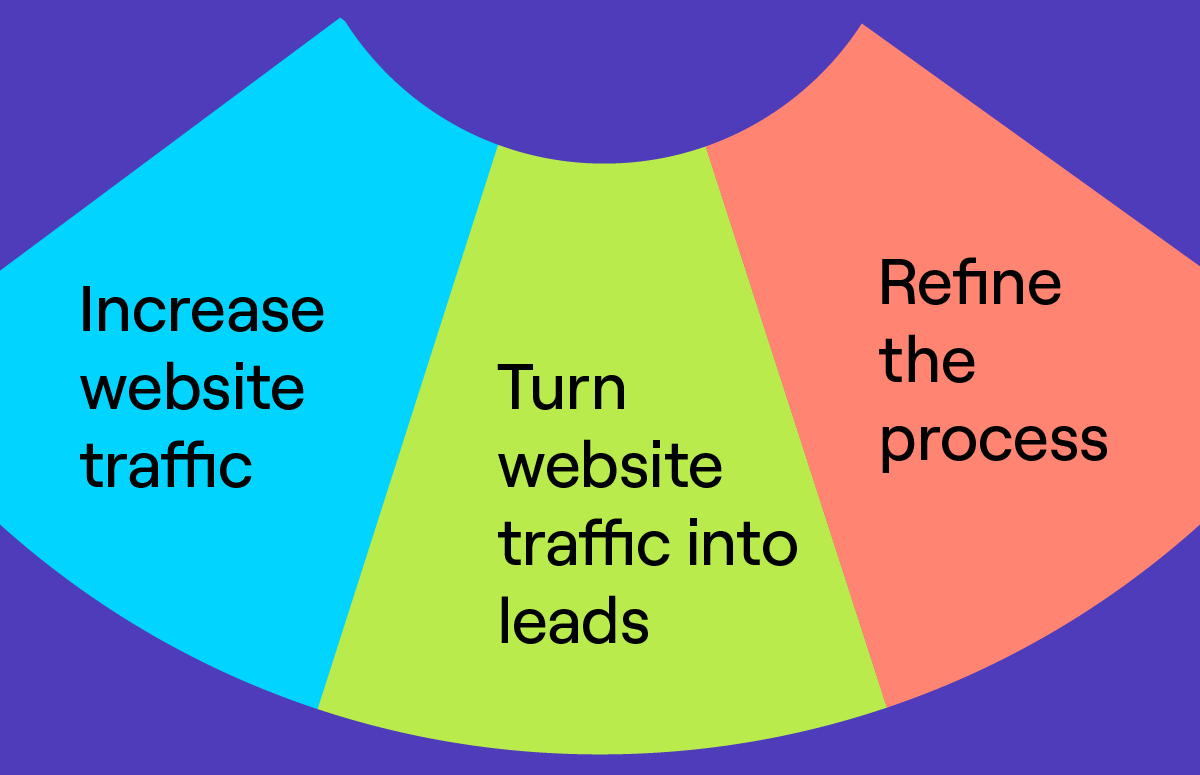What Is a Marketing Qualified Lead (MQL)?
Marketing Qualified Lead FAQs:
All leads aren’t created equal, and that’s especially true when it comes to B2B marketing.
A lead is only as good as its ability to be successfully converted to a paying customer. That’s why marketers need to identify and prioritise Marketing Qualified Leads (MQLs) - leads that have already demonstrated an interest in their products or services and are more likely to convert.
In this guide, we’re covering:
- MQL meaning.
- The difference between a marketing qualified lead and a sales qualified lead.
- The criteria needed to establish whether a lead is ready to be sent to your sales team.
- Examples of different marketing leads that might qualify as an MQL.
Let's get started 👇
What is an MQL (marketing qualified lead)?
A marketing qualified lead (MQL) is a potential customer identified by marketing as having a higher likelihood of becoming a paying customer. An MQL is typically generated through various marketing activities, such as website visits, content downloads, webinars, or other interactions with your brand. Usually, these leads are further qualified by your B2B sales team before they become true customers.
Examples of marketing activities an MQL might take in B2B are:
- Downloading gated or ungated content such as an eBook.
- Filling in a form for a demo.
- Signing up for your company newsletter.
- Visiting your site often.
- Clicking on a LinkedIn, Google or Facebook ad.
- Sending an email via your contact form.
What are the steps for identifying and qualifying an MQL?
A marketing qualified lead is identified by the marketing team. They will identify who has engaged with their campaigns and marketing assets and then examine the customer behaviour and marketing data surrounding it.
To simplify the MQL marketing process, each team should have a defined list of criteria determined by past buyer journeys and the total addressable market. This list can include:
- The type of business or organisation
- Location.
- Job title.
- Company size.
Once you’ve identified a marketing sales lead, you’ll want to establish how much that lead is worth before passing it on to an SDR.
How do you calculate an MQL?
You can use this formula to qualify a lead in marketing:
Cost per MQL = Cost Per Lead (CPL) / marketing spend for total number of new leads
Once your SaaS marketing team determines that the MQL has the potential to be nurtured and converted into a customer, they enter the sales funnel as a SQL.
Here are a few tips to help you qualify MQL leads:
- Examine past MQL behaviour - Look at how past prospects have acted when they were ready to make a decision and when they weren’t. B2B data you’ve collected over the years from past campaigns will help you identify intent faster and prevent an uptick in closed-lost deals.
- Get feedback from your customer - Once your SaaS sales team has converted a targeted lead into a customer, have an SDR follow-up and ask them about the process. What made them decide to choose your company? Then do the same with potential marketing leads that backed out to discover what made them go in another direction and to track future MQL performance.
- Monitor your metrics - If you're keeping track of your marketing metrics, you'll easily be able to monitor trends that occur when it comes to meeting MQL targets with successful conversions. Look at what these SQL leads have in common, which lead sources received the most engagement, and what content had the most conversions and the highest quality inbound marketing leads. This data can help you determine what tactics to duplicate and which aren't working.
- Establish how you are different from your competitors - Look at your competitors and see how your offering differs from theirs. Do you have a feature to hook a prospect with that they don’t? Use this to gain an edge in your content marketing for a higher MQL conversion rate.
Interested in learning more tips for a successful outbound marketing leads funnel? 📹 Watch this video to learn how Cognism aligns sales and marketing and converts MQLs into SQL sales.
Examples of marketing MQLs
There are a number of actions prospects take in lead marketing that qualify them as an MQL.
These actions work hand in hand with lead scoring, campaign analytics, intent data, and demographic data.
Here’s a list of some of the most common examples of marketing qualified lead actions:
- Clicking on a social media or Google ad.
- Commenting, liking or sharing your social media posts.
- Downloading content such as templates, eBooks, white papers and product information.
- Downloading demo software.
- Attending a webinar.
- Signing up for your mailing list or newsletter.
🎧 If you're looking for a different way to attract and convert MQL sales into SQLs, listen to this episode of Revenue Champions.
The Cognism team discuss actionable tactics behind executing a demand generation first sales strategy that delivers month-on-month marketing revenue growth.
Marketing qualified lead vs sales qualified lead: what’s the difference?
What’s the difference when it comes to SQL vs MQL?
Many times a sales qualified lead (SQL) and a marketing qualified lead (MQL) get lumped into different categories because they come from different departments.
But when it comes to B2B, sales and marketing need to align to ensure the entire business’s success, and that’s where these two types of sales leads come in.
You see, the difference between an MQL and a SQL is where each prospect sits in the sales funnel based on their level of interest.
The business term MQL stands for a marketing lead who has engaged with your marketing efforts and might not be ready for your sales team to approach.
The marketing team or market development representatives (MDRs) will continue engaging with the prospect until their interest can be gauged and sent to the B2B sales team. Sales will then approach and convert the lead into an opportunity.
A SQL is a sales lead who has stated they are interested in your product or service and is ready to engage with your sales team.
So, which lead comes first, the SQL or the MQL?
If you look at the level of interest involved, the MQL would come first because they are not ready to leave the marketing funnel and engage with your sales reps, while the SQL has shown interest and is ready to engage and enter the sales funnel.
Get more quality leads with Cognism
It’s time to start moving hot leads through your sales funnel faster than ever before.
Cognism can help you attract more marketing qualified leads that convert!
But that’s not all. Book a demo today to find out how you can:
- Maximise your advertising budget with advanced targeting.
- Improve segmentation and scoring with clean, complete data.
- Illuminate the dark funnel and understand what drives buyers forward.
- Transform the stale or incomplete data in your CRM into actionable business intelligence.
- Easily calculate your TAM and find new personas that weren’t even on your radar.
Click 👇 to book your demo today.
/CTAs%20(SEO)/EN_high-intent-cta-banners-data-sample-webp.webp?width=672&height=258&name=EN_high-intent-cta-banners-data-sample-webp.webp)


